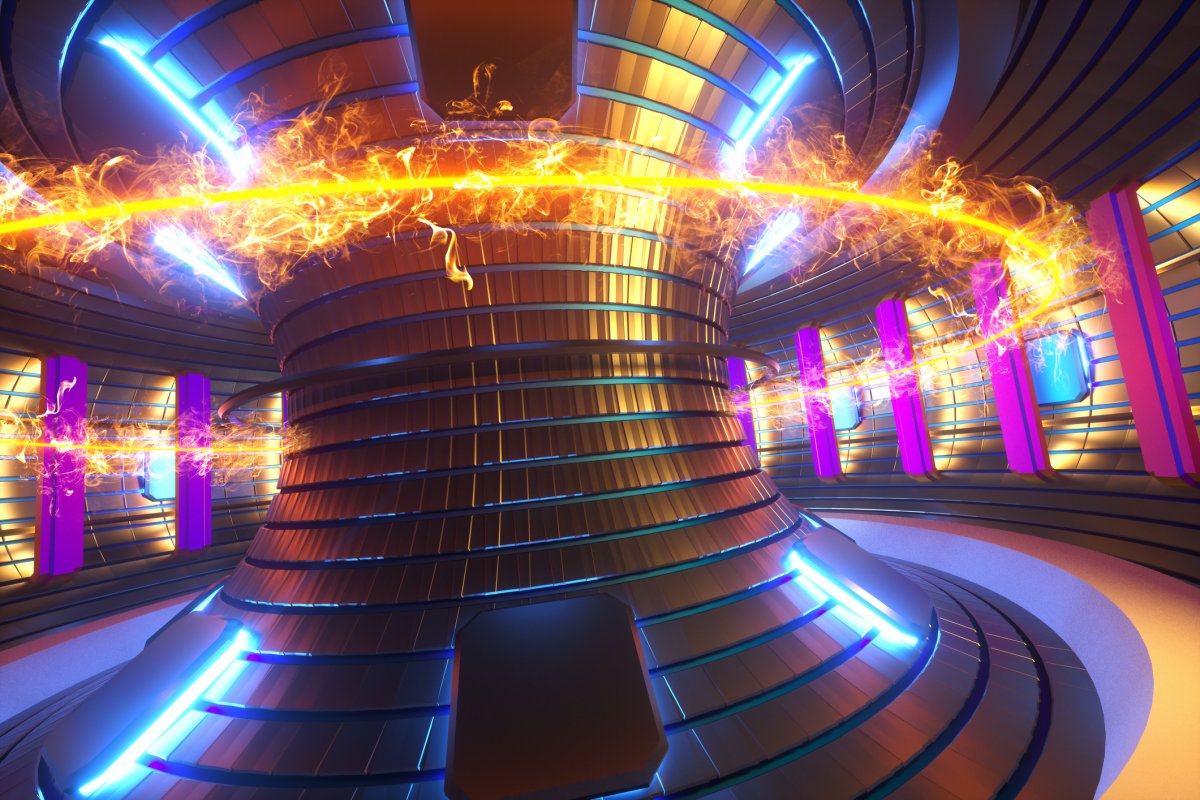Commercial fusion energy may be one step closer after engineers at Princeton developed a tool to make sustained fusion reactions more stable.
Nuclear fusion is a process that creates energy in the same way as our sun. It involves smashing together two atoms with so much force that they fuse into a single, larger atom, releasing huge amounts of energy in the process.
Unlike nuclear fission—the nuclear reaction that is currently used in the energy sector—fusion does not create radioactive waste. It produces three to four times more energy than fission and does not release carbon dioxide into the atmosphere like fossil fuels. Fusion is also a very fragile process that will shut down in a fraction of a second if the correct conditions are not maintained. Therefore, there is no risk of nuclear meltdown from this reaction.
However, the delicate nature of this reaction also makes it difficult to sustain over long periods of time. For this reaction to take place, we need to be able to mimic conditions comparable to the sun, which takes a lot of energy. In fact, to create this reaction on Earth, temperatures need to be at least six times hotter than the center of the sun.

At these superhot temperatures, atoms exist in a state called a plasma, which is basically a soup of negatively charged electrons and positively charged ions that have been ripped apart by the extremely hot temperature of their surroundings.
One method for containing this superhot material is to use powerful magnets inside a donut-shaped device called a tokamak. But sometimes the plasma can become unstable and escape from the confines of these strong magnetic fields, terminating the reaction.
But thanks to the work of scientists and engineers at the Princeton Plasma Physics Laboratory, published in Nature, we may be able to predict and prevent these instabilities before they happen, thus enabling more sustained fusion reactions to take place.
"Previous studies have generally focused on either suppressing or mitigating the effects of these tearing instabilities after they occur in the plasma," first author Jaemin Seo, an assistant professor of physics at Chung-Ang University in South Korea, said in a statement. "But our approach allows us to predict and avoid those instabilities before they ever appear."
The approach in question involves using artificial intelligence. "By learning from past experiments, the AI could develop a final control policy that supported a stable, high-powered plasma regime in real time, at a real reactor," research leader Egemen Kolemen, associate professor of mechanical and aerospace engineering and the Andlinger Center for Energy and the Environment at Princeton, said in a statement.
In other words, the AI could be trained to recognize potential instabilities and change the operating parameters of the machine to avoid these instabilities forming in the first place.
However, as co-author Azarakhsh Jalalvand said this does not mean the AI needs to be taught all of the complex physics that goes in to creating a fusion reaction. "We tell it what the goal is—to maintain a high-powered reaction—what to avoid—a tearing mode instability—and the knobs it can turn to achieve those outcomes," Jalalvand said in a statement. "Over time, it learns the optimal pathway for achieving the goal of high power while avoiding the punishment of an instability."
The team hope that, on the route to developing these AI controllers for fusion reactions, they may also gain more insights into the physics underlying this reaction. "Eventually, it may be more than just a one-way interaction of scientists developing and deploying these AI models," Kolemen said. "By studying them in more detail, they may have certain things that they can teach us too."
Uncommon Knowledge
Newsweek is committed to challenging conventional wisdom and finding connections in the search for common ground.
Newsweek is committed to challenging conventional wisdom and finding connections in the search for common ground.
About the writer
Pandora Dewan is a Senior Science Reporter at Newsweek based in London, UK. Her focus is reporting on science, health ... Read more
To read how Newsweek uses AI as a newsroom tool, Click here.








